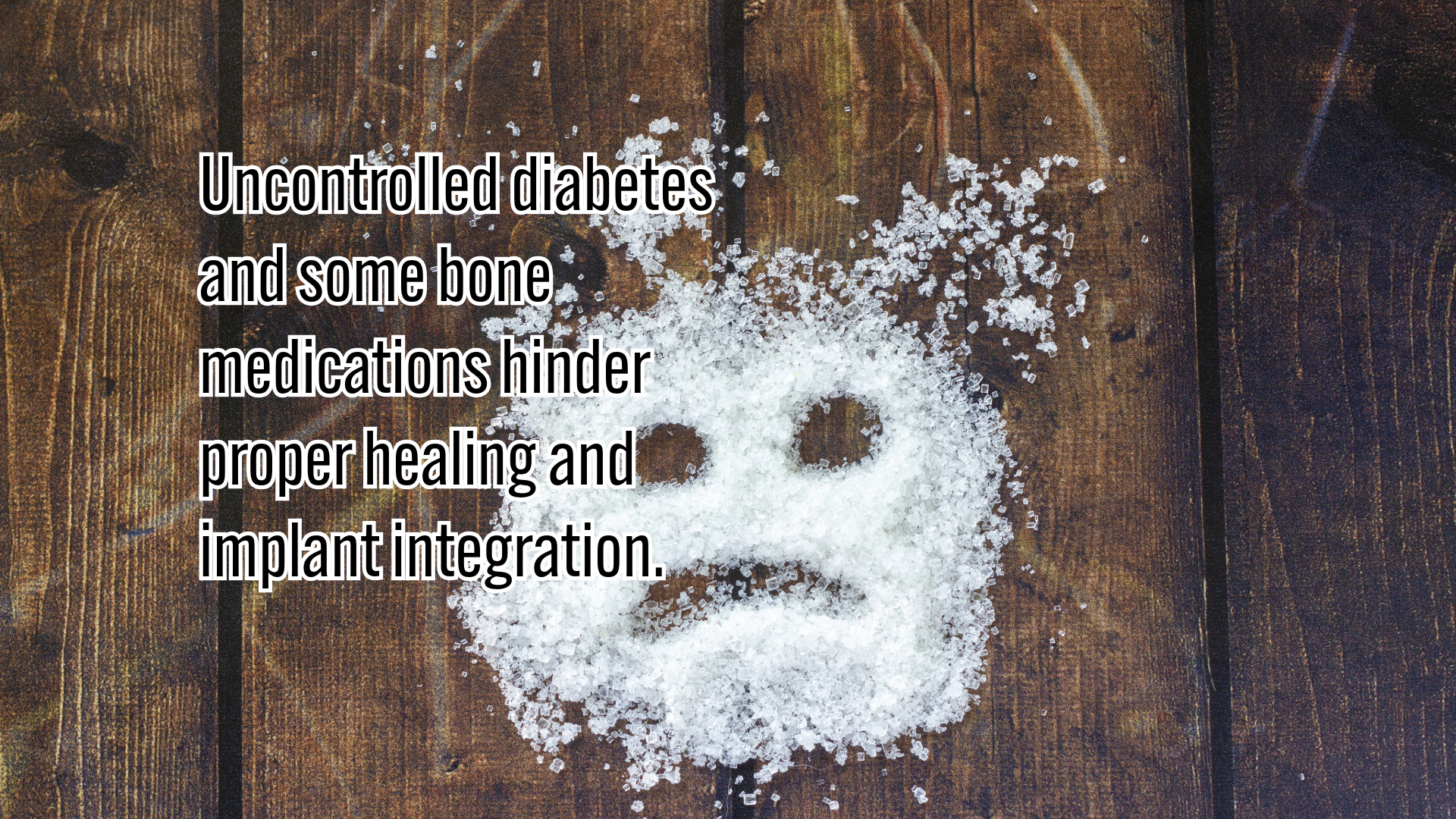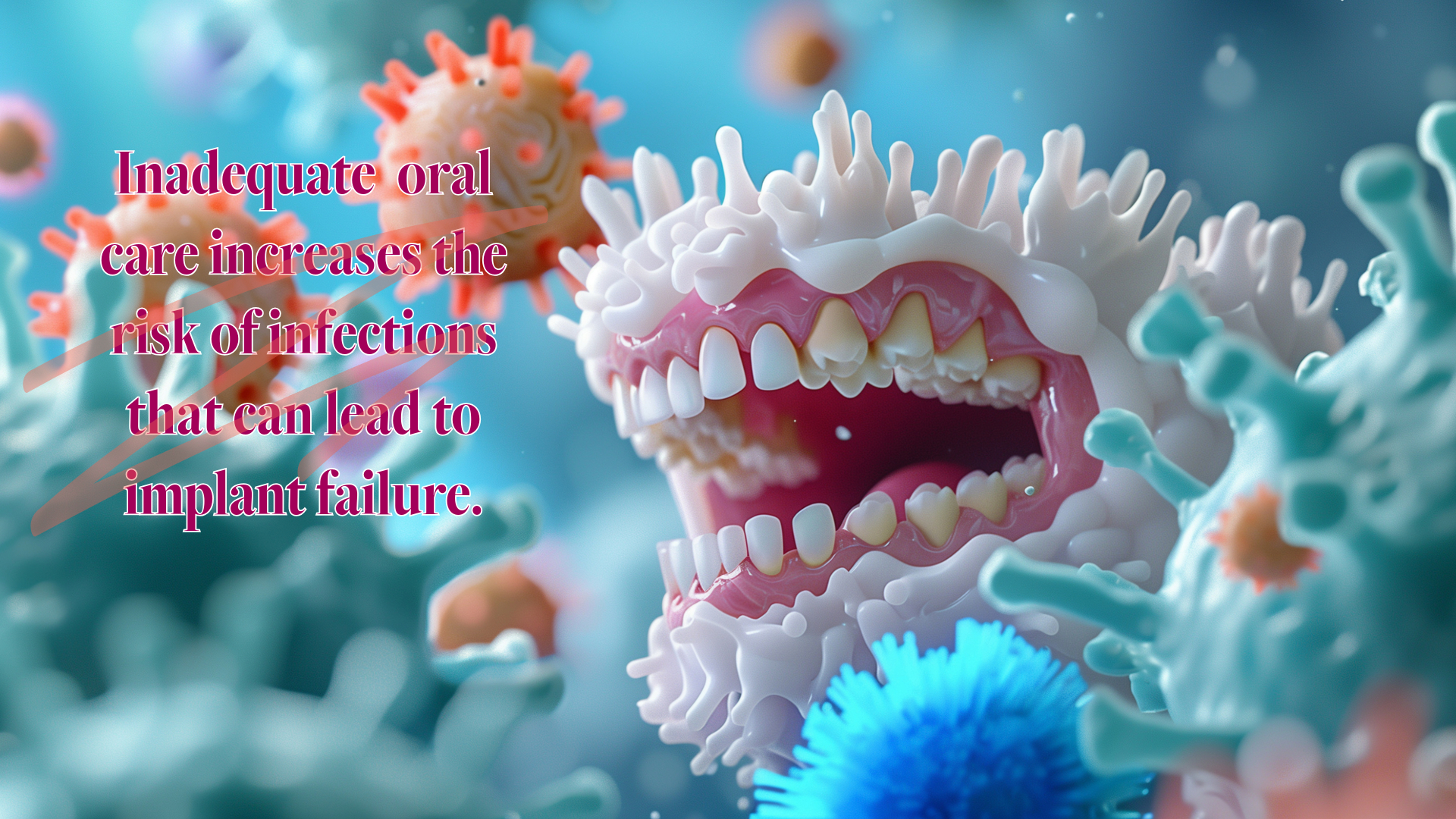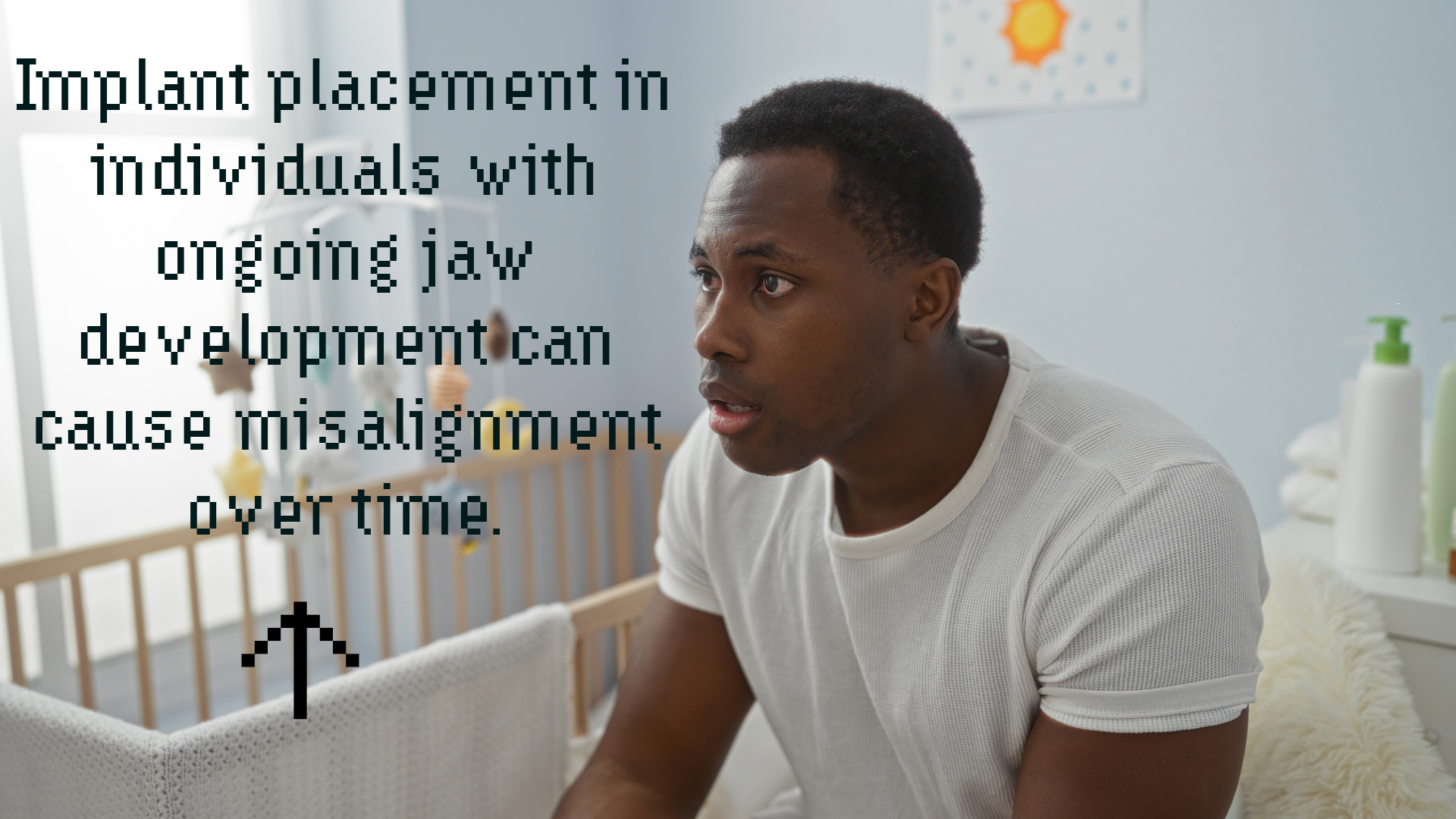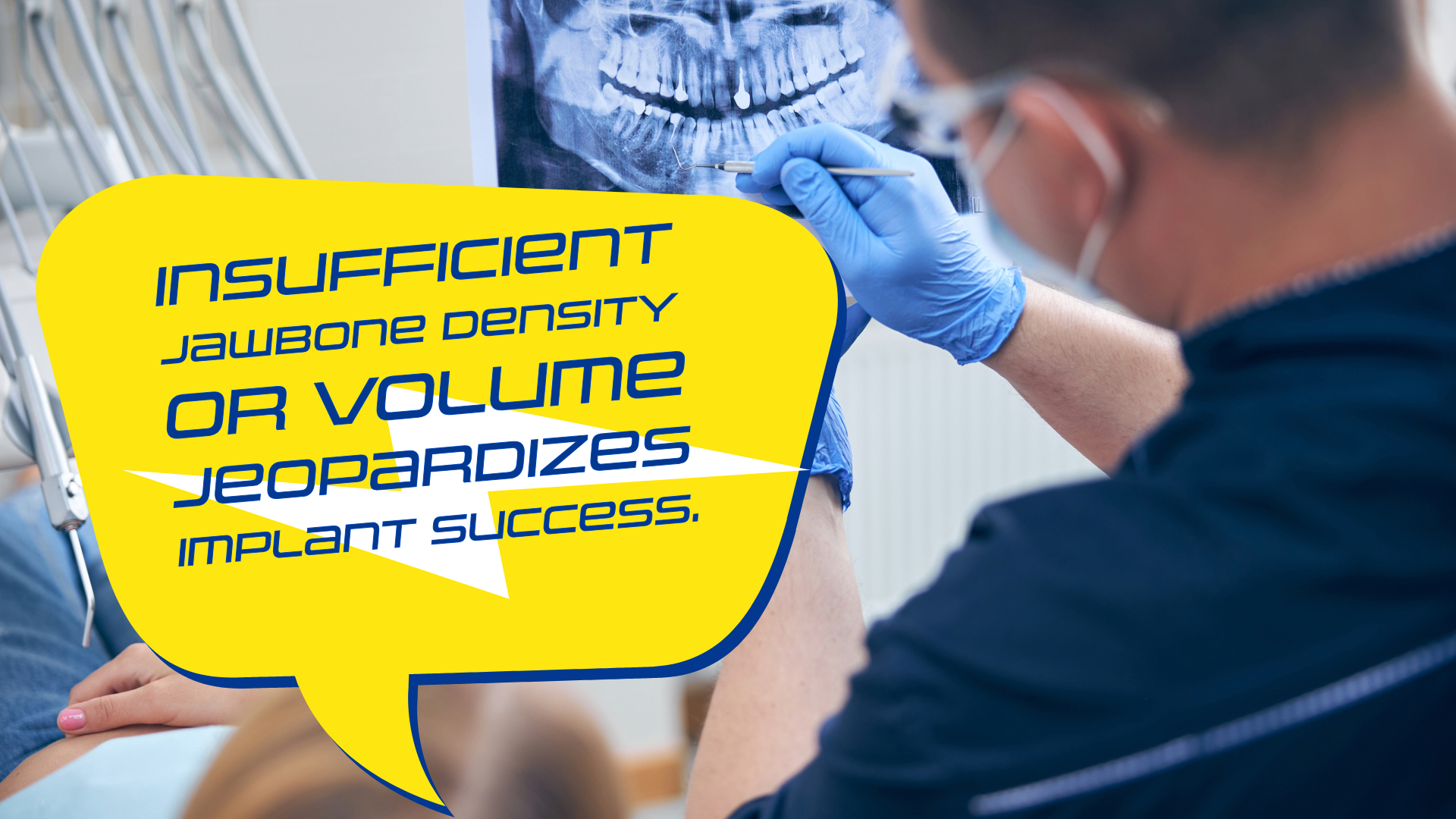
Dental implants can be perfect for replacing missing teeth but may not be the right option for every patient. Because implant treatment requires a surgical procedure and a long recovery period, certain health conditions or lifestyle habits may make it unsuitable for some patients. Here are ten of the most compelling arguments against getting dental implants, and we spell them out for you. These reasons are discussed together with their medical and biological mechanisms and supported by relevant scientific data and expert opinions.
1. Uncontrolled Diabetes or Certain Bone Growth Drugs

For osseointegration, the fusion of bone and implant, to occur after implant surgery, solid healing is necessary. Studies have shown that implant procedures in patients with well-controlled diabetes have similar success rates to healthy individuals. However, patients with uncontrolled diabetes have a much higher risk of post-operative infection and implant loss, as the body is unable to perform this healing. (1).
In other words, for a diabetic patient with high blood sugar levels, there is a high chance that the area will not heal or become infected after implant placement. For this reason, experts recommend that diabetic patients take their blood sugar under control before undergoing implant treatment. A hemoglobin A1c test of less than 7.5%, for instance, is regarded as an appropriate degree of control for implants. (2)
The biological basis for diabetes affecting implant success is also well understood. High blood sugar impairs blood circulation to tissues and reduces the body's resistance to infections. Similarly, some medications that affect bone metabolism can also interfere with the success of dental implants. In particular, the bisphosphonate group of bone-strengthening drugs commonly used in the treatment of osteoporosis or similar bone-supporting therapies used in cancer patients can have undesirable effects on the jawbone.
Although in some patients these drugs may help to stop bone destruction and maintain bone density, they negatively affect the remodeling of the bone around the implant. For example, a patient who has been treated with high doses of bisphosphonates for cancer may have non-healing wounds and infections in the jawbone after implant surgery. Therefore, if the patient has been on long-term bisphosphonates or a similar "bone drug," implant treatment is generally not recommended or requires very careful evaluation.
2. Poor Oral Hygiene

Not paying enough attention to oral hygiene can lead to gum disease as well as serious problems around the implant. The tissues around the implant, just like natural teeth, are susceptible to inflammation when bacterial plaque accumulates. Poor oral hygiene can cause a serious condition called peri-implantitis, which can lead to infection of the gum and bone tissue around the implant. The condition actually develops by a similar mechanism to periodontitis (advanced gum disease), which affects natural teeth: When bacterial plaque and tartar develop around the implant, peri-implantitis causes bone resorption and weakening of the support to which the implant is attached, leading to implant loss.
Scientific studies have shown that individuals with poor oral care habits have an increased risk of developing peri-implant infections. One study found that people who do not practice regular daily oral care are 14 times more likely to develop peri-implantitis (3).
Plaque that accumulates, especially at the neck of the implant (at the gum line) first develops into peri-implant mucositis, a superficial inflammation, which progresses to peri-implantitis if no measures are taken. In this process, there are initially only symptoms such as redness, swelling, and bleeding around the implant, while in the advanced stage, bone loss and loosening of the implant are seen.
So, if you think you can't maintain oral hygiene, it may be better to avoid implants. Having implant treatment and then neglecting its maintenance will put your health at risk and waste the investment made. To prolong the life of the implant, regular brushing, flossing or using an interdental brush, antiseptic mouthwashes, and periodic dental check-ups are essential. Infection can lead to the loss of implants, similar to how poor care can lead to tooth decay.
3. Being Too Young

One of the factors affecting the success of dental implant treatment is the patient's age and bone development status. Implant application is generally not recommended, especially for very young individuals who have not completed bone development. An implant placed while the jawbone is growing cannot move or adapt its position like the surrounding natural teeth. As a result, the implant may become incompatible with the surrounding tissues over time as it remains fixed in the jaw and continues to grow. For example, an implant placed at the age of 15, when the jaw is still developing, may remain high or low in relation to the position of other teeth after a few years and may appear to be in the wrong place.
Experts generally state that jaw growth can continue until approximately 16-17 years of age for girls and 18-21 years for boys. By this age, bone development is largely complete, and the implant can be positioned more securely.
4. Smoking

Smoking has a negative impact on oral and dental health, as well as on the general health of the body. The chances of success of dental implants in patients who smoke are significantly lower than in non-smokers. There are several reasons for this: Nicotine and other chemicals in cigarettes constrict blood vessels, reducing blood flow, weakening the immune system and reducing the capacity of oral tissues to regenerate themselves. Recovery after implant surgery requires abundant blood supply and a strong immune system; smoking creates the opposite environment.
Scientific data confirm that smoking significantly increases the risk of implant loss. According to the results of a comprehensive meta-analysis, smokers have a 140% higher risk of implant loss than non-smokers () 4, (5). The evidence suggests that a smoker has approximately 2.5 times the odds of implant failure. Smokers have significantly higher failure rates in both the maxilla and mandible, and smokers also have an average of 0.5 mm more bone loss around the implant (6). In other words, smoking not only causes the implant to fail to hold, but also causes the bone around the implant to dissolve.
To explain the biological damage caused by smoking in a simpler way: Cigarette smoke disrupts the blood circulation in the mouth. When blood circulation is impaired, not enough oxygen and nutrients can reach the implant site, which slows healing. Smoking also increases inflammatory reactions and reduces the effectiveness of the body's defense cells (e.g. white blood cells). As a result, the body cannot properly fight any infection that may occur after the implant is placed. Furthermore, the flow and quality of saliva is altered in smokers, leaving the mouth drier and making it easier for bacteria to grow. When all these factors combine, the chances of an implant becoming infected and failing in the mouth of a smoker are significantly increased.
Smoking also increases the risk of peri-implantitis. Due to the damage caused by smoking to the gum tissues, the tissues become more vulnerable to plaque accumulation around the implant. Even with good oral hygiene, an implant patient who smokes can develop peri-implant inflammation or rapidly worsen mild inflammation due to smoking alone (7). For example, a regular smoker may experience delayed wound healing after implant surgery, delayed closure of sutures, and prolonged tenderness and redness in the area. Even months later, complete healing may not be achieved in this area and the implant may eventually be lost.
We often hear the question, "I smoke, but only a few cigarettes a day, can I still get an implant?". It should be known that even a small amount of smoking negatively affects the capillaries in the implant area. Therefore, it may be a healthier decision for a heavy smoker not to get an implant or to postpone it until he/she quits smoking. This not only increases the chances of the implant holding, but also protects overall oral health.
5. Insufficient Bone Level

Dental implants need enough quality bone in the area where they will be placed. Implants are screw-shaped artificial roots and are fixed by holding onto the jawbone. If there is not enough volume in the jawbone to surround the implant or if the bone is too weak/thin, it may not be possible for the implant to stand stably. Bone resorption in the area after tooth loss typically causes inadequate bone levels. After a tooth has been extracted, the jawbone begins to thin and descend over time as it loses its load and function in that area. The amount of bone may become too small for an implant over the years, especially if a long time has passed since the tooth extraction.
Even in the first year after a tooth is missing, there may be a significant narrowing of the jawbone. As a result, some patients may be told by their dentist that "unfortunately there is no bone left to implant". Implant placement carries a high risk when bone height or thickness is insufficient. If the implant cannot find sufficient bone support, it may either not hold at all in the first place, or even if it does, the thin bone around it may soon melt away, leaving the implant exposed. Scientific studies also show that insufficient bone quality or quantity is an important risk factor for early implant failure (8). In other words, if your bone is weak, there is a high chance that the implant will not fuse (osseointegrate).
Inadequate bone level not only causes the implant to fall out, but can also lead to significant complications during the operation. For example, the bone height in the posterior region of the upper jaw is usually limited due to the sinus cavity. If bone resorption occurs in the upper jaw after tooth extraction, the sinus cavity widens and the bone height may decrease to a few millimeters. In such a case, if an implant is placed too close to the sinus floor, the implant tip may enter the sinus cavity or tear the sinus membrane. These conditions can lead to chronic sinusitis infections (this will be discussed in Chapter 9). In the lower jaw, when the bone melts too much, the proximity to the mandibular nerve increases. When there is insufficient bone, placing an implant poses a risk of damaging the nerve, which can lead to permanent numbness of the lower lip—a serious complication.
If a patient does indeed have insufficient bone for an implant, dentists often plan to build bone first with procedures such as bone grafting (bone augmentation) and then place the implant. Bone grafting is the process of adding artificial or natural bone fragments to the area that has been resorbed and allowing the body to grow new bone there. This requires additional surgery, cost, and time but, in most cases, makes implants possible. However, some patients may not want additional surgery, or their health does not permit it. In such cases, it may be safest to forgo the implant due to insufficient bone.
6. Chronic Health Problems and Immune System
Our general state of health plays a major role in the success of surgical procedures. We need to evaluate patients with serious chronic diseases or a suppressed immune system extra carefully before starting dental implant treatment. If the body's defense system is weak or if a systemic disease affects the body's healing capacity, the healing process of the implant will also be negatively affected. Some of the conditions that fall into this category are: advanced renal failure, active autoimmune diseases (e.g. uncontrolled lupus or Behcet's disease), uncontrolled HIV infection (in the AIDS stage, when immunity is very low), immunosuppressive medication after organ transplantation, high-dose corticosteroid (steroid) therapy for a long period of time, and chemotherapy for cancer.
Although different mechanisms may be involved in each of these situations, the common denominator is interruption of the normal healing process after implant surgery. Take, for example, a patient taking immunosuppressive drugs for rheumatoid arthritis or a similar autoimmune disease. These drugs (methotrexate, biologics, etc.) work to control the disease by reducing the body's inflammatory response. But they also reduce the body's ability to heal wounds and fight infection.
If possible, a short break from such medications, with a doctor's approval, can improve the chances of healing; otherwise, implant treatment in these patients is considered contraindicated.
Steroid (cortisone) therapy poses a similar risk. Patients on long-term, high-dose corticosteroids may have reduced bone density (osteoporosis) and slower tissue healing. Steroids disrupt the balance between bone formation and destruction, preventing new bone formation and also suppressing immunity. Therefore, in a body on steroids, the integration of the implant into the jawbone becomes difficult, and the risk of infection increases. For instance, a patient who has taken cortisone for asthma or rheumatism for years may take a long time to accept the implant. In addition, if the wound area heals late after surgery and an infection develops during this period, the body may not be able to resist it sufficiently, and the implant may fail.
Cancer treatments (especially chemotherapy and targeted smart drugs) can also affect implant success. Chemotherapy drugs target rapidly dividing cells; therefore, along with the cancer cells, healthy but rapidly multiplying cells in the body (e.g. bone marrow cells, mucous membrane cells) are also damaged. In a patient who has undergone chemotherapy, bone healing and the immune system are temporarily weakened, making the implant procedure risky.
Conditions such as chronic renal failure also indirectly affect implant success. In renal failure, calcium-phosphorus balance is disturbed, bone metabolism is affected, and bones may weaken. Treatments like dialysis also make patients with advanced kidney disease more vulnerable to infections. In a person with kidney disease, the bone structure may be osteoporotic, and the bone may not be able to hold it intact when the implant is placed. It is recommended that these patients first consult with a nephrologist (kidney specialist) to see if they are suitable for the implant.
If the body is generally worn down by the disease or suppressed by medication, recovery may not be as expected. For this reason, it may be safer for individuals with active serious illnesses not to have implants until they have recovered or the disease is under control or to seek alternative treatments. In such cases, the dentist should always make the best decision in consultation with the relevant specialists.
7. Osteoporosis and Bisphosphonates
Osteoporosis is a disease characterized by a decrease in bone density and weakening of the bones. It is particularly common in post-menopausal women and the elderly. The jawbone may be less dense because it is part of the overall bone structure. While this does not necessarily preclude implant placement, it does present some challenges. In low-density bone, the primary attachment of the implant (stability at initial placement) may be poor and the osseointegration time may be prolonged. In other words, even if the implant fuses to the bone in the presence of osteoporosis, the bone-implant contact rate at the microscopic level may not be as high as in healthy bone. However, the big issue is the risks posed by drugs such as biphosphonates used in the treatment of osteoporosis.
Bisphosphonates (e.g. drugs such as alendronate, zoledronic acid) and similar anti-osteoporosis treatments are commonly prescribed to stop or slow the progression of osteoporosis. These drugs suppress the osteoclast cells that break down bone, thereby reducing bone breakdown and maintaining density. But this mechanism also negatively affects the healing of the jawbone in cases such as tooth extraction or implant surgery. This is because normally, when an implant is placed, the body "surrounds" and integrates the implant through a cycle of bone destruction and construction (remodeling) in that area. In patients taking bisphosphonates, this cycle of bone regeneration is artificially slowed down, making it difficult for the implant to fuse.
Moreover, bisphosphonates are associated with a rare but serious condition of the jaw bone called osteonecrosis of the jaw (ONJ). Non-healing wounds and bone death can occur in the jawbone after procedures such as tooth extraction or implant placement, especially in cancer patients receiving high doses of intravenous bisphosphonates or in patients with severe osteoporosis on long-term oral bisphosphonates. This complication is called "drug-induced osteonecrosis of the jaw" and can be difficult to treat.
Since osteoporosis itself reduces bone quality, when implanting in patients with osteoporosis, surgeons may choose longer implants, implants with thicker diameters, or, if necessary, bone strengthening treatments first. So planning should be done more carefully. However, if the patient is also taking bisphosphonates or similar denosumab (RANKL inhibitor, another anti-osteoporosis drug), the physician needs to make a grave risk assessment. Often, in such patients, alternative dental treatments (e.g. conventional dentures or)
Nevertheless, your dentist will explain the risks in such a situation and perhaps suggest other solutions instead of implants. In conclusion, osteoporosis and a history of bisphosphonates is a situation in which you should always discuss implant treatment with the dentist and the relevant specialist (e.g. endocrinologist or orthopedist). If necessary, implants in patients under treatment with these medications are according to most experts, inadvisable and other treatment options should be considered.
8. Teeth Clenching and Grinding (Bruxism)

If you clench or grind your teeth at night during sleep or during the day without realizing it (a condition called bruxism), this habit is a serious risk factor for dental implants. Bruxism is characterized by excessive forces applied to the teeth as a result of abnormal activity of the jaw muscles. This condition, which can cause problems such as abrasion, cracking and gingival recession in natural teeth over time, also creates mechanical overload in implants. Since there are no periodontal ligaments (fibers that surround the tooth and act as shock absorbers) around the implants like in natural teeth, squeezing or grinding forces are transmitted directly to the implant and the bone surrounding it. This can cause micro-damage to the bone by creating tiny "earthquake" effects on the implant.
Research on the effect of bruxism on implant success reveals that implant and superstructure (prosthesis) failures are higher in patients with bruxism. One study found significantly more fractures of porcelain teeth on implants, loosening of screws, and implant loss in patients with bruxism (9). Another study reported that bone loss around the implant and implant failure were more common in patients with bruxism than in those without. In light of these data, the likelihood is reduced that an implant placed in a patient with active bruxism will stay in the long term without causing problems.
Bruxism affects not only the fusion of the implant with bone but also the durability of the implant superstructures. Continuous clamping forces can cause the abutment screws attached to the implant to loosen and crowns (veneers) to fall off if they are cemented or break if they are screwed. Even if your implant stays in, the tooth on it may cause issues, and you may not be able to use it fully.
If you have a habit of clenching your teeth but are still considering implant treatment, your dentist will take some precautions. It is usually recommended to use a night plate (night guard) so that even if you clench your teeth while sleeping, the forces are absorbed in the plastic and the implant is not overloaded. Also, more flexible materials can be used instead of full porcelain to provide a more even force distribution in the prosthesis made on the implant. However, if the patient does not follow these precautions, the possibility of damage to the implant will always exist, as bruxism will continue.
9. Sinus Problems
In the back of our upper jaw, above the molars, there are air spaces called maxillary sinuses. When the upper jawbones become thinner after tooth extraction, these sinus cavities may expand downwards. Therefore, when we want to implant in the back of the upper jaw, we often encounter the sinus. Sinus problems can be an important limitation or risk factor in implant treatment, especially for the upper jaw.
If a patient has a persistent sinus inflammation problem such as chronic sinusitis, the risk of infection increases after an implant close to this area because the health of the sinuses is impaired. For example, if an implant is made close to the sinus floor of someone with chronic infection whose nose and sinuses are frequently filled, the existing bacteria there may spread to the implant area and prevent healing. In addition, perforation (rupture) of the sinus membrane during implant placement is an undesirable but possible complication.
Even in experienced hands, if the sinus floor is too thin, the socket prepared for the implant can open into the sinus cavity. If the implant tip prolapses into the sinus cavity or the sinus membrane ruptures, the risk of implant failure and sinus complications increases significantly (10). It has been reported in the literature that even implants penetrating a few millimeters into the sinus can sometimes lead to chronic sinusitis. This is because the presence of the implant as a foreign body in the sinus can cause persistent inflammation of the mucosa and disruption of mucus flow.
A specific case study: A patient undergoes a sinus lifting operation with an implant in the maxillary molar region. After the operation, the patient returns with complaints of a persistent unilateral runny nose and facial pain. In the control performed, it is seen that a part of the implant has protruded (protruded) into the sinus and blocked the natural canal of the sinus. The patient is referred to an otorhinolaryngologist, who removes the implant from the sinus with endoscopic sinus surgery (11). This case illustrates how an implant protruding into the sinus can cause sinusitis. As long as the implant remained in the sinus, the patient experienced repeated episodes of infection, but sinus health improved after the implant's removal.
Sinus problems are not only about infection; anatomical variations are also important. In some people, the sinuses are huge and saggy, and the bone is very thin. For these individuals, adding artificial bone through sinus lift surgery might be required prior to implantation. However, if the patient already suffers from sinusitis or is not willing to undergo sinus surgery, it may be necessary to consider other solutions instead of implants. In some people, the tooth roots are very close to the sinus cavity; if there is a navigation error during implantation, the implant can escape into the sinus.
10. Cost and Time
Dental implant treatment has not only medical but also economic and temporal aspects. Compared to other dental treatments, it is both pricier and takes longer. Cost is one of the main reasons that discourage many patients from getting implants. Implants are high-tech products that require surgical expertise, which contributes to their high cost. The price of a single implant and a crown varies by country and clinic but is often pricier than alternative solutions (such as a bridge or palatal prosthesis).
In countries such as the United States, it is reported that a single implant costs around 3000-5000 dollars, while whole mouth implants can reach very high figures of 20,000-50,000 dollars. Countries with a developed health infrastructure, like Turkey, are an alternative to countries like the US and the UK, where implant costs are high.
Conclusion
Although dental implants generally have high success rates (95-98% success for 10 years), no treatment is 100% guaranteed. Implant failure, i.e. failure of the implant to fuse with the bone, or fusion and subsequent loss, is a rare occurrence. Surgical implant placement carries the risk of complications such as infection, nerve damage, sinus perforation and in a small percentage of cases, problems may occur. The average implant failure rate is reported to be around 2%.
There is no guarantee that even a successfully fused (osseointegrated) implant will remain problem-free for a lifetime. Implants, just like natural teeth, are dependent on the health of the surrounding tissues and regular care. There are even studies that suggest that the gum around the implant may be more susceptible to infection than the natural gum because the implant and gum connection is different. Without regular care, peri-implantitis can develop around the implant and the implant can be lost. Therefore, an implant recipient should strictly adhere to lifelong care routines such as brushing, flossing and regular doctor check-ups. Experts emphasize that dental implant candidates must be willing and able to perform meticulous oral care at home, as the continuation of a successful implant depends on "homework at home".
